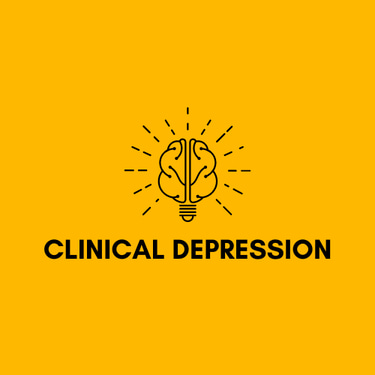For Questions: Text (833)233-0869
Depression Disorder Remote Therapy: A Modern Solution for Anxiety and Depression


Introduction
In today's fast-paced world, mental health issues like anxiety and depression have become more prevalent than ever. With the rise in awareness, people are becoming more conscious about seeking help for their mental health struggles. However, many find traditional therapy difficult to access due to location, stigma, or time constraints. This is where depression disorder remote therapy has emerged as a convenient, effective, and accessible solution for many.
This article will delve into what depression disorder is, how anxiety and depression are linked, and how remote therapy offers a modern alternative to traditional in-person treatments.
Understanding Depression Disorder
Depression, often referred to as major depressive disorder (MDD), is a common and serious medical illness that negatively affects how you feel, the way you think, and how you act. Depression leads to feelings of sadness and loss of interest in activities once enjoyed. It can result in a variety of emotional and physical problems and decrease a person’s ability to function at work and at home.
Symptoms of Depression
Some common symptoms of depression include:
Persistent sadness or feeling empty
Loss of interest in previously enjoyable activities
Fatigue or lack of energy
Difficulty concentrating
Feelings of worthlessness or excessive guilt
Sleep disturbances (either insomnia or sleeping too much)
Changes in appetite (weight loss or gain)
Thoughts of death or suicide
Causes of Depression
The causes of depression are multifaceted. It may stem from a combination of genetic, biological, environmental, and psychological factors. Trauma, stressful life events, chemical imbalances in the brain, and family history of mental health conditions all play a role.
Understanding the complexity of depression is key to addressing its treatment. It’s not just about a person feeling “sad”—it’s a serious condition that requires attention and, often, professional intervention.
The Link Between Anxiety and Depression
Anxiety and depression frequently co-occur. While they are distinct disorders, many people suffering from one often experience the other. Anxiety is characterized by excessive worry, nervousness, or fear about future events, while depression is typically associated with persistent sadness or a sense of hopelessness.
When anxiety and depression are present together, it can be overwhelming. Anxiety can exacerbate depressive symptoms and vice versa, leading to a cycle that’s hard to break without proper treatment. For this reason, effective treatment must address both conditions concurrently.
Traditional Therapy vs. Remote Therapy
Traditional Therapy
Traditional therapy often involves in-person sessions with a licensed mental health professional. These therapy sessions typically take place in a therapist’s office and can include various forms of treatment, such as cognitive-behavioral therapy (CBT), psychodynamic therapy, or interpersonal therapy.
However, despite its effectiveness, there are barriers to traditional therapy, including:
Accessibility: Not everyone has access to qualified therapists, especially in rural areas.
Time constraints: Many people struggle to fit therapy into their busy schedules.
Stigma: Some may feel uncomfortable or judged for attending therapy sessions in person.
Cost: Therapy can be expensive, and many people lack adequate insurance coverage for mental health care.
The Rise of Depression Disorder Remote Therapy
With advances in technology and the increased need for accessible mental health care, remote therapy for depression and anxiety has become an attractive alternative. Remote therapy, also known as teletherapy or online therapy, involves the use of digital platforms to connect individuals with licensed therapists.
This form of therapy allows individuals to receive treatment for depression disorder from the comfort of their own homes, eliminating many of the barriers associated with traditional therapy.
Benefits of Remote Therapy for Depression Disorder
Remote therapy offers numerous advantages for individuals struggling with depression and anxiety:
1. Convenience
One of the most significant benefits of remote therapy is its convenience. Instead of commuting to a therapist’s office, individuals can attend sessions from their home or any location with internet access. This flexibility is particularly beneficial for those with demanding schedules or who live in remote areas where therapy options may be limited.
2. Reduced Stigma
Many people feel ashamed or embarrassed to seek help for their mental health struggles. Remote therapy allows them to access care more discreetly, in a way that feels more private and secure. The ability to attend therapy sessions from home can reduce the fear of being judged and encourage more people to seek the help they need.
3. Access to a Wider Range of Therapists
In-person therapy is often limited by geographic location. With remote therapy, individuals have access to a broader range of therapists who specialize in different aspects of mental health, including depression disorder and anxiety. This can help people find a therapist who is a good match for their specific needs.
4. Cost-Effective
In many cases, remote therapy is more affordable than traditional in-person therapy. Many online therapy platforms offer subscription-based models, allowing individuals to pay a fixed rate for unlimited sessions or messages with their therapist. This can be a more cost-effective option for those without comprehensive health insurance.
5. Flexible Scheduling
Online therapy offers greater flexibility in terms of scheduling. Clients can choose sessions that fit into their schedules, whether it’s early in the morning, late at night, or on weekends. This flexibility can make it easier for individuals to commit to regular therapy sessions, which is crucial for long-term success in managing depression and anxiety.
6. Accessibility for People with Mobility Issues
Remote therapy is particularly advantageous for people with physical disabilities or chronic illnesses that make travel difficult. It allows them to receive the mental health care they need without having to worry about accessibility issues.
How Remote Therapy Works for Depression Disorder
Remote therapy typically involves several different formats, each of which can be tailored to the needs of the individual:
1. Video Therapy
Video therapy is the most common format for remote therapy. It mimics the traditional therapy session but takes place over a secure video conferencing platform. This allows for face-to-face interaction between the therapist and the client, ensuring that the personal connection of in-person therapy is maintained.
2. Phone Therapy
For individuals who may not have access to reliable internet or feel uncomfortable with video calls, phone therapy is a viable alternative. While it lacks the visual cues of video therapy, it can still provide valuable support and guidance for those struggling with depression and anxiety.
3. Text-Based Therapy
Text-based therapy offers an asynchronous form of communication, where clients can send messages to their therapist throughout the day, and the therapist responds at scheduled times. This form of therapy is especially useful for individuals who may have difficulty articulating their feelings verbally or who prefer to communicate in writing.
4. Chat-Based Therapy
Some platforms offer live chat therapy, where clients and therapists engage in real-time written conversations. This format is a middle ground between text and video therapy, offering immediate interaction while allowing for a degree of anonymity.
Choosing the Right Remote Therapy Platform
When looking for a depression disorder remote therapy platform, it’s essential to consider several factors:
Accreditation of therapists: Ensure that the platform employs licensed mental health professionals who are qualified to treat depression and anxiety.
Security and privacy: Make sure the platform uses encryption and other security measures to protect your personal and medical information.
Cost: Consider the pricing structure and whether the platform offers a subscription model, pay-per-session, or other payment options.
User reviews: Look for platforms with positive reviews from users who have experienced similar mental health issues.
Is Remote Therapy Effective for Depression and Anxiety?
Numerous studies have shown that remote therapy for depression disorder is just as effective as in-person therapy for treating both depression and anxiety. Cognitive-behavioral therapy (CBT), one of the most commonly used approaches for treating depression, has been found to be highly effective in both traditional and remote formats.
For many individuals, the added convenience and accessibility of remote therapy make it easier to commit to regular sessions, leading to better outcomes in the long term.
Conclusion
Depression disorder remote therapy offers a modern, effective, and convenient solution for individuals struggling with anxiety and depression. By breaking down the barriers of traditional in-person therapy, remote therapy makes mental health care accessible to a broader population, allowing more people to get the help they need.
Whether you’re dealing with depression disorder, anxiety, or both, remote therapy could be the key to improving your mental health and leading a more fulfilling life. With a wide range of platforms and formats available, it's easier than ever to find the right therapy option for you.
By embracing this digital approach to mental health care, you can take control of your emotional well-being without leaving the comfort of your home.
©2025
Clinical Depression
For Questions: Text
(833) 233-0869
